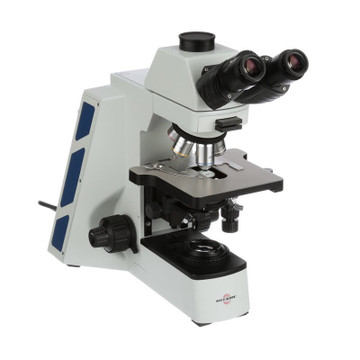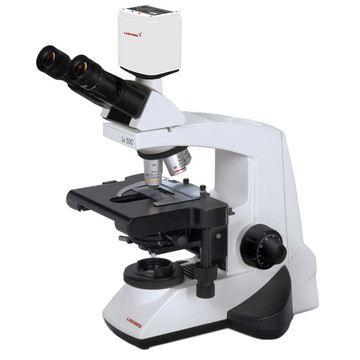
-

-

ACCU-SCOPE EXC-400 Hematology Digital Microscope Package
$6,598.33$7,256.25 -

-

-

-

-

-

Choosing a Hematology Microscope
Choosing a hematology microscope depends on many factors, with budget being a big consideration in many situations, but not the most important factor. Examining most blood smears starts with low magnification for an overview of cell density, erythrocytes, color, morphology, inclusions and other initial findings. Then a higher magnification is used for more detailed analysis. Finally, you’ll want to be sure that highest color fidelity is possible with bright field microscopy phase contrast and polarizing microscopy techniques – depending upon the specimens your lab is reviewing.
The ergonomics is also a critical consideration. Hematologists spend much of their time hunched over a microscope, often leading to muscular strain in the back, neck, and shoulders while also compromising visibility. The more ergonomic the hematology microscope, the more comfortable the hematologist is, which can lead to greater accuracy.
Pulling all of this data together implies that magnification, optical quality, fidelity of digital microscopes, and ergonomic design are all key factors when selecting a hematology microscope. High-quality optics are critical, ergonomics may be important if the microscope will be used for long periods of time, and digital imaging may be essential if a camera and long-distance analysis are necessary.
Hematology Microscopes FAQ
What Is a Hematology Microscope?
Hematology microscopes are used by hematologists and laboratory technicians to look at red blood cells, white blood cells, plasma, platelets, and sometimes bone marrow. Many times, phase contrast microscopes are used with counting chambers and hemacytometers to count the blood cells and to differentiate between normal and abnormal cells.
How Do Hematologists Use Microscopes?
Hematologists use microscopes in hospitals and laboratories to look for abnormalities in blood cells that lead to a medical diagnosis. Most hematologists are directly working in patient care and diagnosing illness related to hematologic disease, especially cancers. Some of these diseases and disorders include blood clots, hemophilia, leukemia, sickle cell anemia, lymphoma, and blood parasites.
A simple technique is used by the hematologist or lab technician by smearing blood cells thinly onto glass hematology microscope slides and allowing the smear to dry. The subject is fixed to the slide and stained, which allows individual cell types to be recognized and counted. Different staining techniques are used, depending on what the professional is looking to find.
The use of a 50x is an important objective magnification found on hematology microscopes. For hematology applications, a 100x dry objective is an ideal alternative to oil objectives, eliminating the need for frequent cleaning of stages and condensers.
Light microscopy with magnification of up to 1000x is generally called upon to assist with the hematologist’s work in examining blood smears. A digital microscope camera may also be employed to document the specimen and to share with other professionals for further diagnosis or review.
What Magnification is Needed to See Blood Cells?
As hematologists are most frequently working with blood cells, it’s important to understand what magnification is necessary for optimal viewing. To get a good specimen, blood is smeared on hematology microscope slides with the bottom slide holding a drop of blood and the top slide is used to spread out the blood into a thin layer. This is a key part of viewing blood cells.
- 40x magnification lets you view a wide area on the slide. Since it’s best to view blood cells that are not piled up, this magnification is useful for an overview of the smear and finding a single layer where no stacking occurs.
- 100x magnification will give you enough clarification to distinguish red and white blood cells but little else.
- 500x magnification is an ideal choice for hematologists.
- 1000x magnification is recommended for greater detail and accuracy.
Custom Quotations for Hematology Microscopes
Let our experts create a custom quote just for you with our best pricing and terms on microscopes for hematology. Simply tell us your requirements, and we'll do the rest.
If you need product advice, technical support, or to enquire about quantity discounts, feel free to contact us by email or call us at (877) 877-7274.
New York Microscope Company is the only microscope company to offer a Free Service Protection Guarantee with the purchase of every hematology microscope. Visit our Free Service Protection page for more details.







